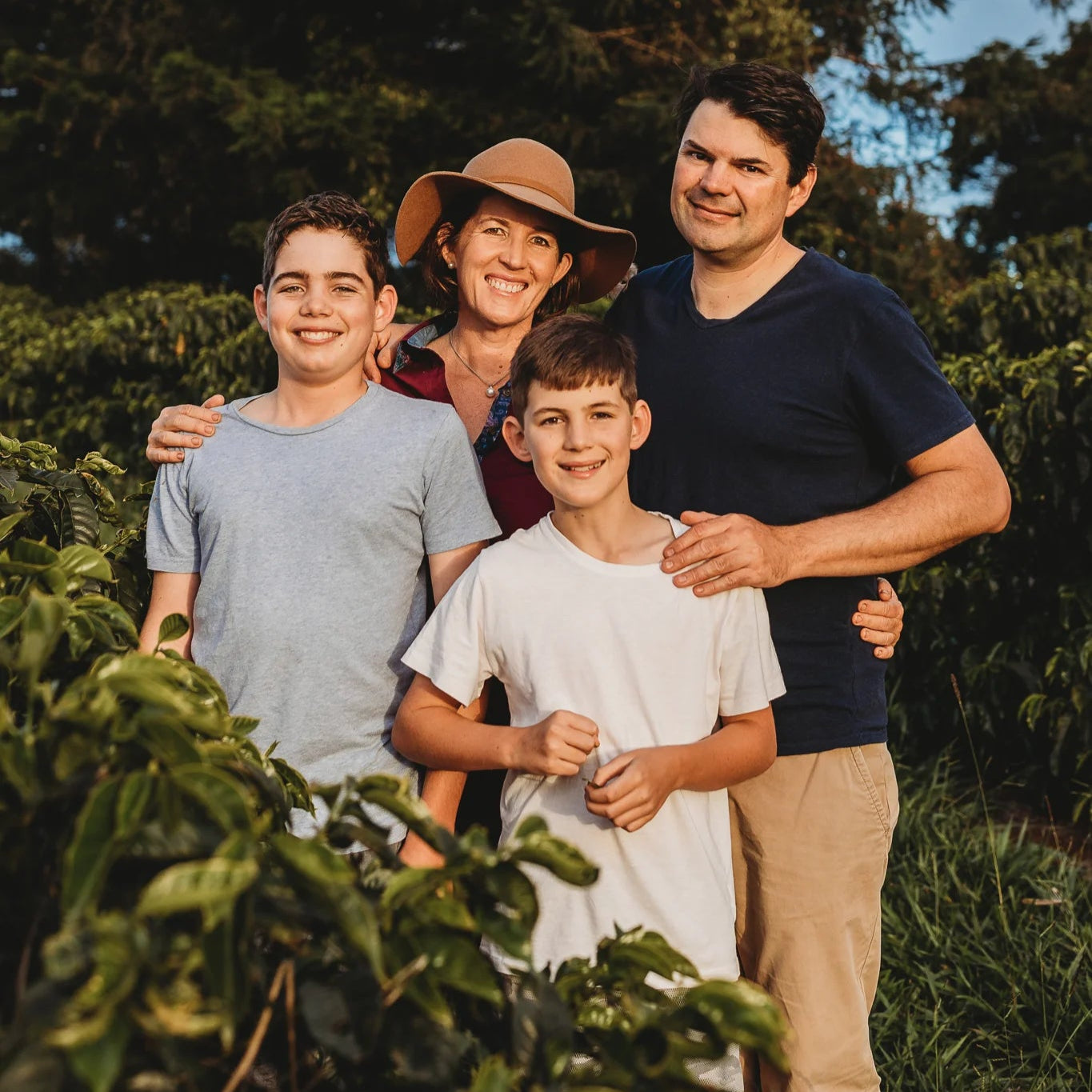

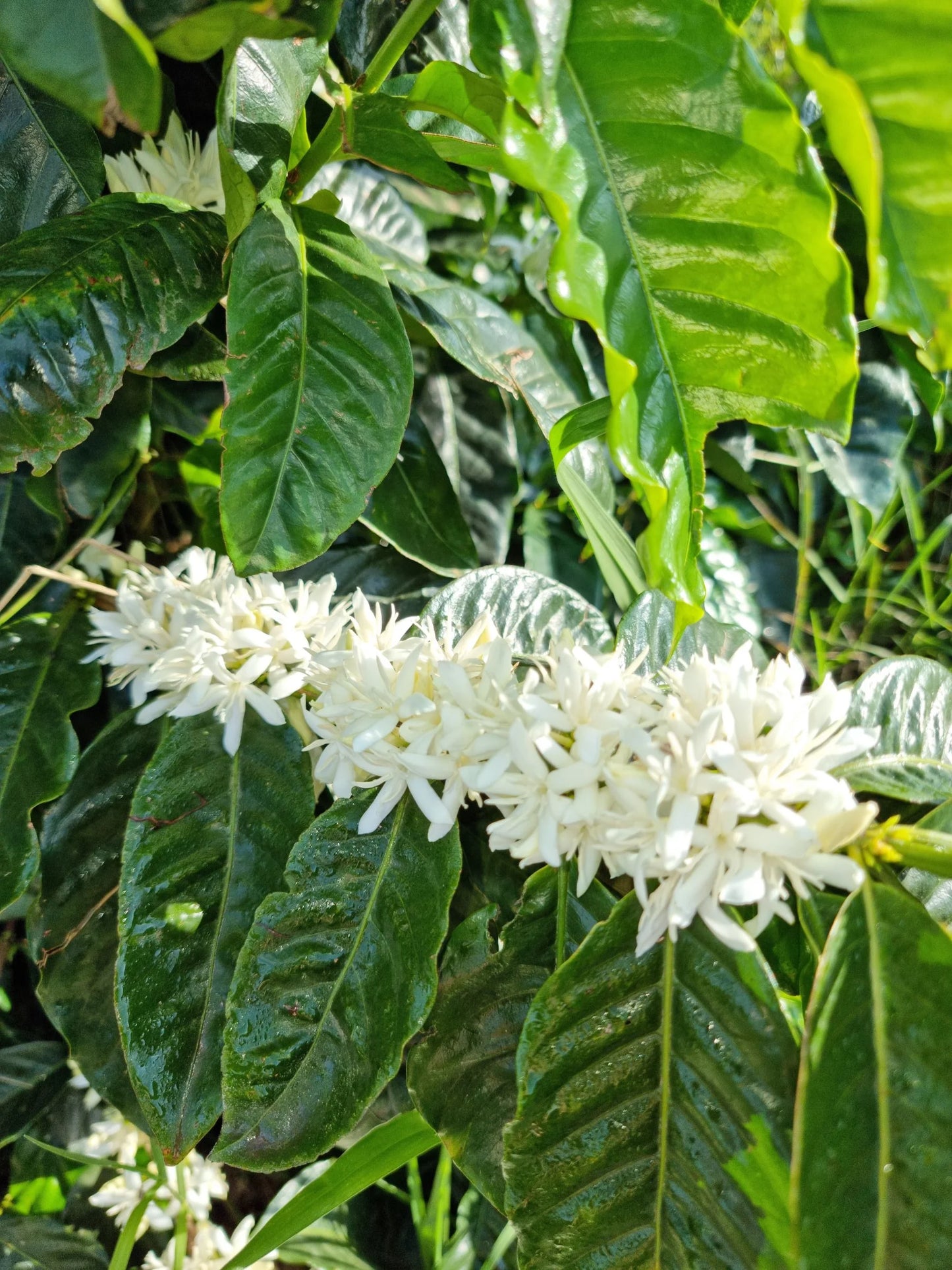
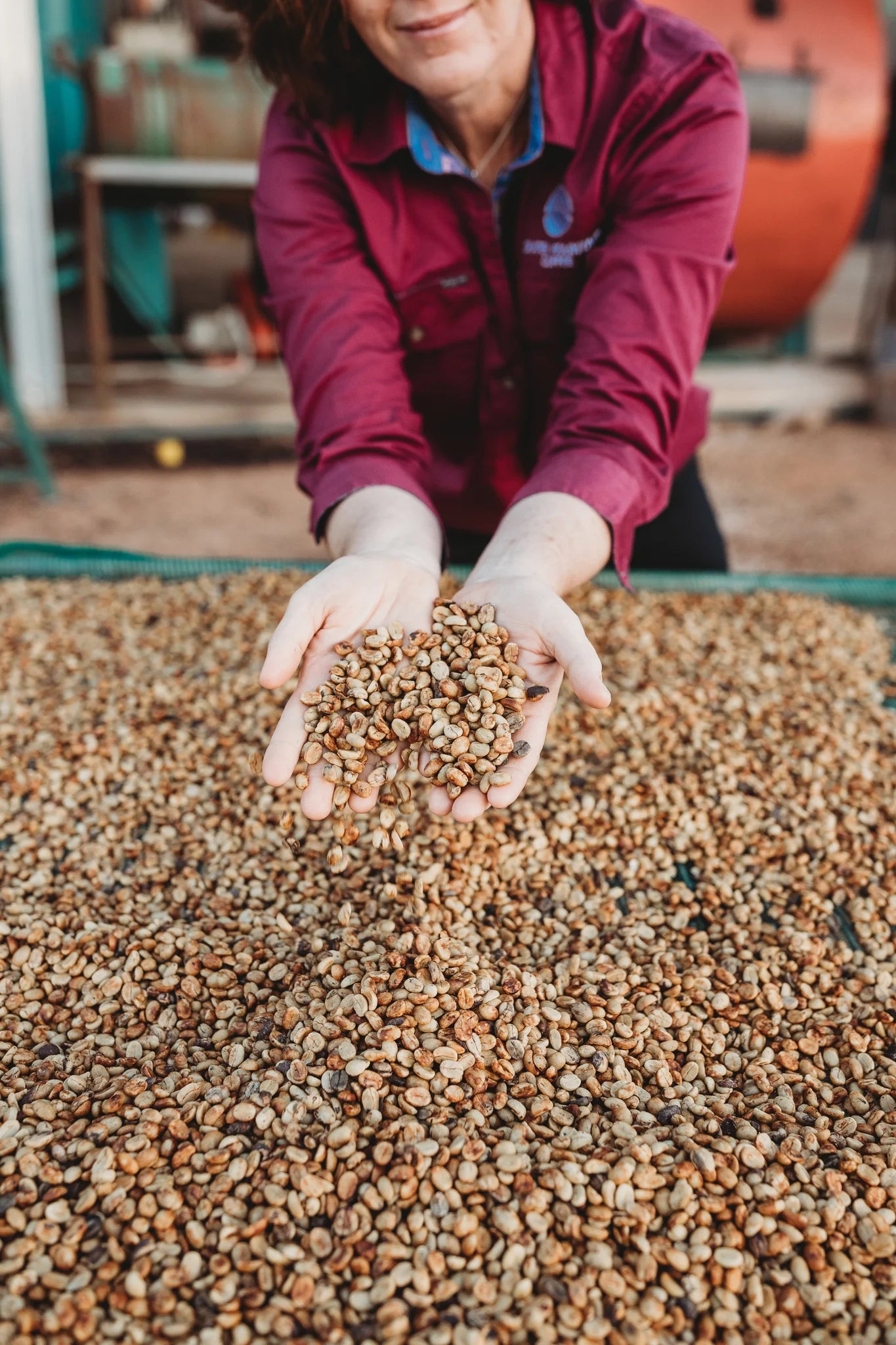
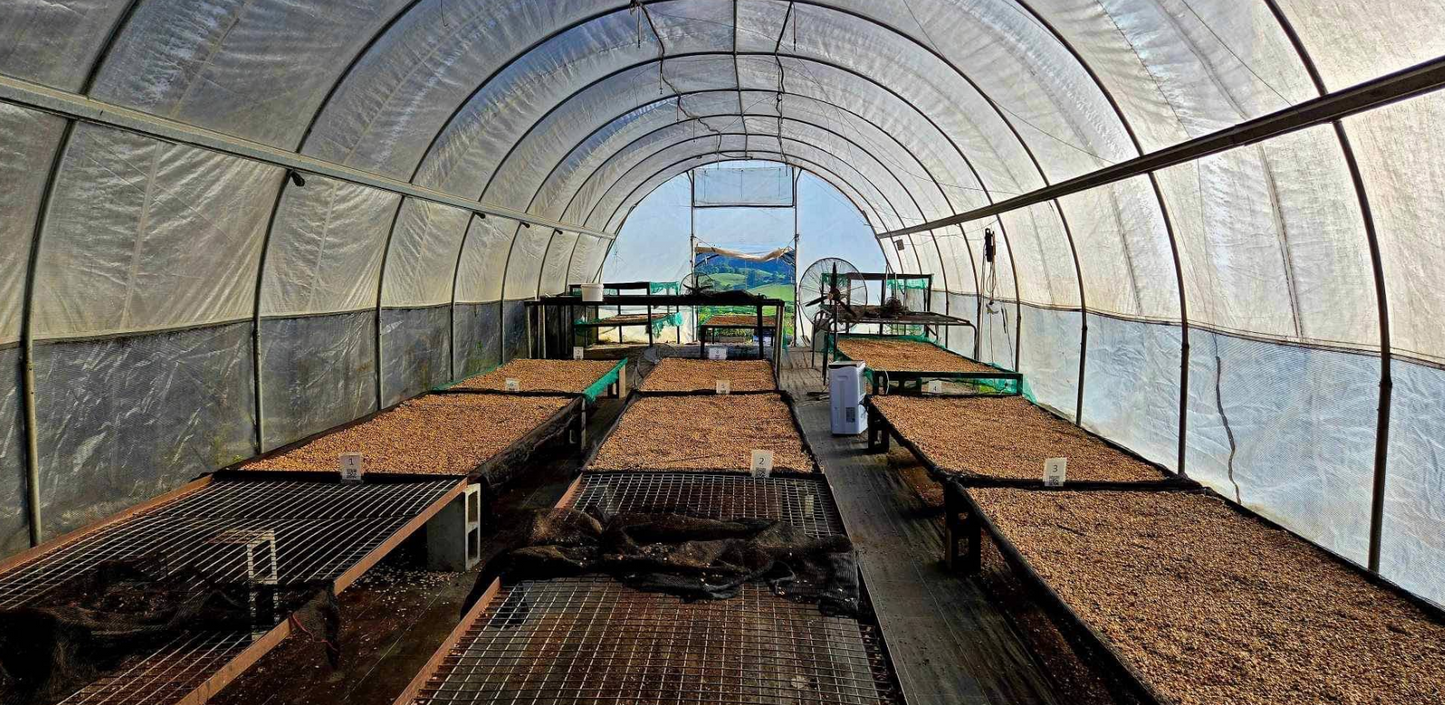
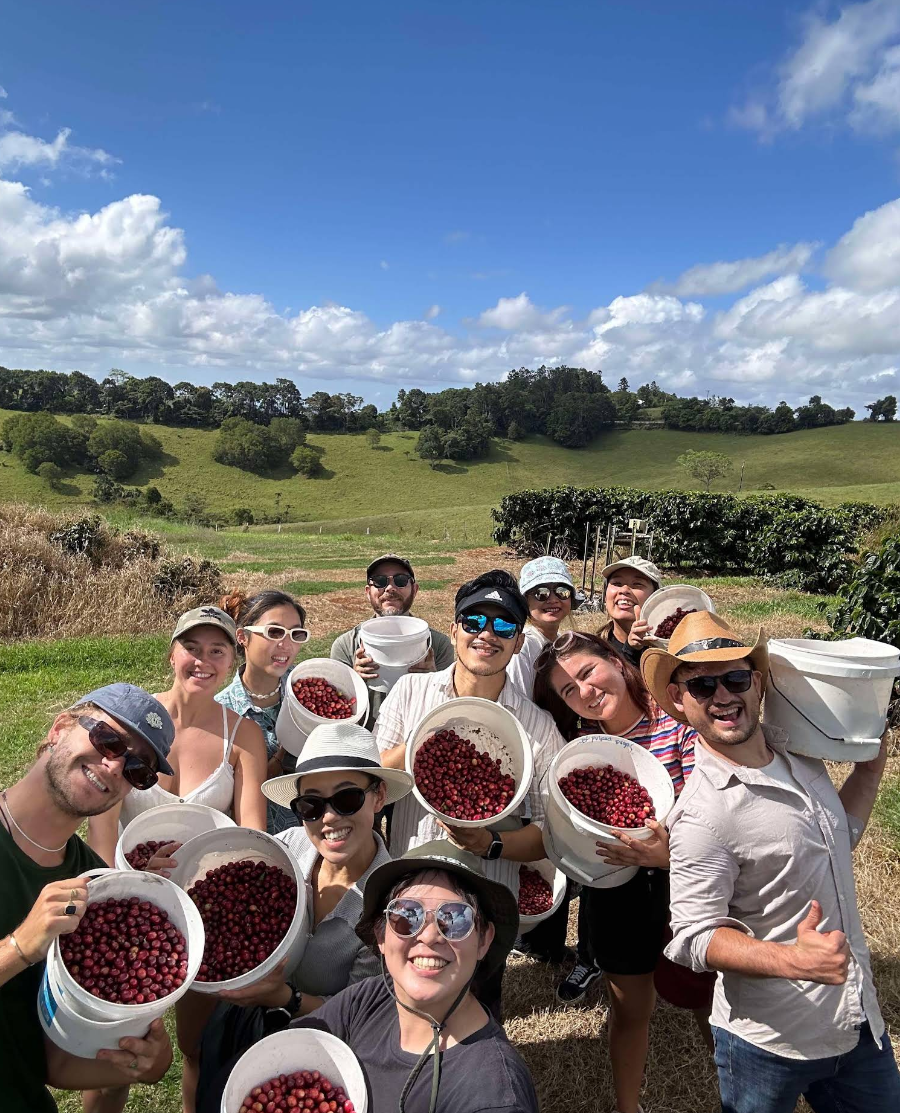

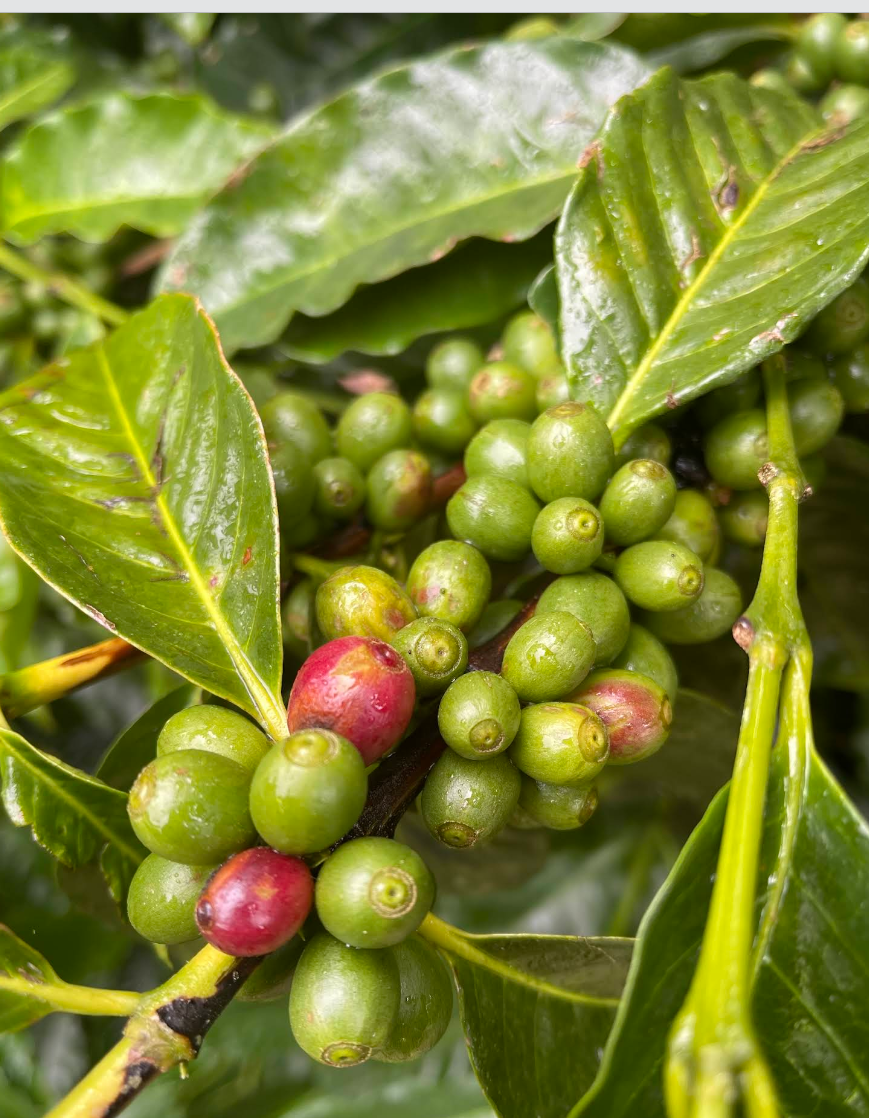
?
?
?
?
?
?
?
?
?
?
?
?
Katrina and I (Rhys) had the pleasure of meeting Lucy from Crater Mountain Coffee at a roasting conference in Melbourne in March 2025. Tasting her coffees and hearing her story was genuinely inspiring—it was a reminder of just how far Australian coffee has come. The quality, care, and innovation we saw from local producers like Lucy proved that Australian-grown coffee is now competing confidently on the world stage.
We were so impressed by the depth and character in every cup that we knew we had to support it. That’s why we’ve committed to buying Crater Mountain’s 2024 and 2025 harvests—because we believe in what Lucy and her family are doing, and we’re proud to share their coffee with you.
Perfect for a delicate, smooth and naturally sweet flat white or cappuccino bursting with flavour. Equally as good without milk for clean and sweet espresso shots.
We recommend this coffee for use with espresso machines as well as plungers, aeropress and stovetop percolators, with or without milk.
About Lucy & Crater Mountain
Crater Mountain Coffee is a specialty coffee producer located in Upper Barron, Far North Queensland, Australia. It is recognized as Australia’s highest-altitude coffee farm, with an average elevation of 1,040 meters above sea level. The coffee is grown on volcanic slopes, contributing to its distinct flavor profile.
They cultivate around ten different Arabica varieties, with a focus on Bourbon and Catuai cultivars. All coffees are grown, processed, milled, and colour sorted on-site.
Crater Mountain has gained international attention, with its beans selected for the 2022 World Barista Championship and World Brewer’s Cup. The farm uses innovative fermentation techniques, including wine and champagne yeasts, to enhance fruity flavors.
Committed to sustainability, they minimize chemical usage and use gravity-fed irrigation systems.
About the process - WASHED
Lucys tasting notes... "Washed: was very clean, nice honeydew melon, green apple, very clean acidity as it cooled. Probably had the lowest sweetness & body out of the samples, but I didn't mind that about it because of the cleanliness..."
Density Sorted & Pulped Washed
Wine Yeast Fermentation for 2–4 days
Dried on Raised Beds in a humidity-controlled greenhouse for an average of 8 days
Aged/Stabilised in Parchment for 2 months
About the process - Pulped Natural
Lucys tasting notes... "Pulpled Natural was very clean, nice honeydew melon, green apple, very clean acidity as it cooled. Probably had the lowest sweetness & body out of the samples, but I didn't mind that about it because of the cleanliness..."
In cherry for 2 days
Pulped & Washed
Dried on Raised Beds in a humidity-controlled greenhouse for an average of 10 days
Aged/Stabilised in Parchment for 2–4 months
-
Coffee in Australia
-
Over the past ten years, Australia's specialty coffee scene has continued to evolve, shifting from being a nation of skilled coffee consumers to one of ambitious producers. While much of the country’s coffee culture has historically focused on roasting and brewing imported beans, the last decade has seen a rise in high-quality, locally grown coffee—especially from Far North Queensland. Farms at higher altitudes are producing exceptional Arabica, thanks to unique microclimates and increasingly refined processing techniques. This movement has helped reposition Australian-grown coffee from novelty to serious contender on the global stage.
Crater Mountain Coffee, situated in Upper Barron, Queensland, has been at the forefront of this change. As the highest-altitude coffee farm in Australia (1,040 MASL), Crater Mountain has drawn international attention, with its beans featured in world coffee competitions and praised for their clarity and complexity. Their innovative use of wine and champagne yeast fermentations has pushed flavor boundaries and aligned them with modern experimental processing trends. Alongside them, Jack Jamal Coffee has carved a reputation for quality and consistency, known for producing clean, balanced profiles and focusing on traceability and sustainable farming. Together, these producers represent a new era of Australian-grown coffee—defined by elevation, experimentation, and excellence.
SKU: crater_mountain_washed_200g
Package Weight: 250g
How does my coffee come packaged?
Despite some of our product images looking very fancy our coffee is packaged into a plain brown paper foiled lined bag with a Swiss WIPF degassing valve. This offers superior oxygen and moisture protection. We recommend once you crack the seal you store your coffee in AirScape containers or Weber Workshop Bean Cellars for a single dosing option.
You can also freeze/vacuum seal in small lots, then use straight away once removed from freezer.
We don't have fancy printed bags with ziplocks (more plastic), we save that cost and buy better quality green beans so you can focus on your cup quality instead of fancy marketing and artwork.








